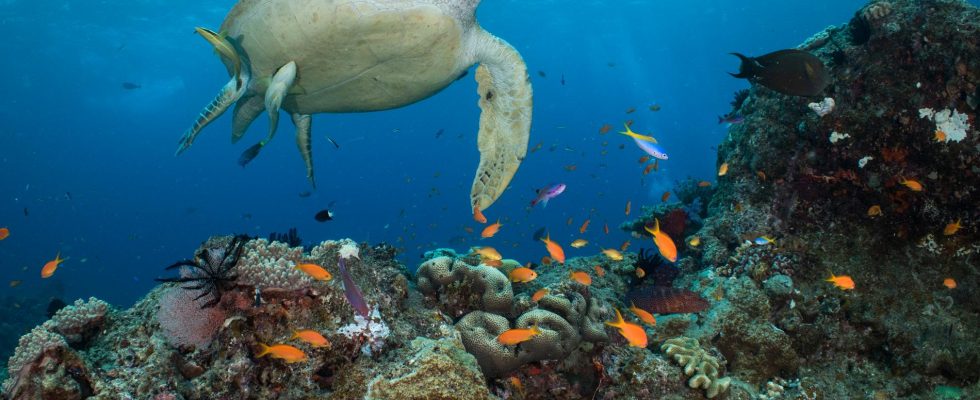unsaveSave
expand-left
full screen
chevron-rightnext
Green sea turtle is a migratory species. Archive image.
1 / 2Photo: Great Barrier Reef Marine Park Authority/AP/TT
The eel, the rudd and the shy porpoise of the Baltic Sea. The situation for the wildlife species that migrate – sometimes thousands of miles – is rapidly deteriorating.
It shows a heavy report that warns of devastating effects for nature.
Globally, it is about everything from elephants and bears to dolphins and sea turtles. The new report from the United Nations has for the first time mapped the status of the wild animals that move, some staggering distances, to find food and reproduce.
The focus is on the almost 1,200 species that are considered particularly vulnerable and that are on the list of the Bonn Convention on the Protection of Migratory Wild Animals.
Fish are threatened
For some of the species, a brightening is seen, but for almost half – 44 percent – the populations are in decline. Perhaps most worrying is the situation for the fish species that are on the convention’s protection list, where 97 percent are threatened with extinction.
The eel that moves hundreds of miles from its nursery in the Sargasso Sea to, among other things, Swedish coasts is an example. But even migrating sharks and rays are in dire straits, with populations that have declined by around 90 percent since the 1970s.
Many migratory species outside the convention’s protection list are also in decline. 399 of them are threatened with extinction and some may need strengthened protection, according to the report.
All is not bleak, however. Some migratory species are on the rise and the white-tailed eagle is one of the glimmers of light being highlighted. Nowadays, plenty of the previously threatened bird also floats over Swedish waters.
But overall, the risk of extinction of migratory species is increasing – and humans pose the greatest threat, according to the report. Partly it is about exploitation in the form of, for example, unsustainable hunting and overfishing, and partly that the animals’ habitats are destroyed when agriculture, roads and infrastructure for energy spread.
“Is there hope”
The migratory animals are particularly sensitive because their migration routes are affected when nature is destroyed. At the same time, they play an important role in ecosystems, including by transporting nutrients, hunting pests and pollinating plants.
– There are many threats, but there is hope. The future of these species is in our hands and there are steps to be taken, says Kelly Malsch, from the UN Environment Program Unep’s Department of Conservation Monitoring and lead author of the report.
The report highlights a series of recommendations for better and faster conservation efforts. Among other things, this involves increased measures to identify and protect important places for the species, as well as increased speed in the fight against climate change and action against noise and plastic pollution.
FACT This is a migratory species
The Convention on the Protection of Migratory Wild Animals, or the Bonn Convention as it is also known, defines a migratory species as all or parts of a population that “cyclically and predictably” cross one or more national borders.
Read more
